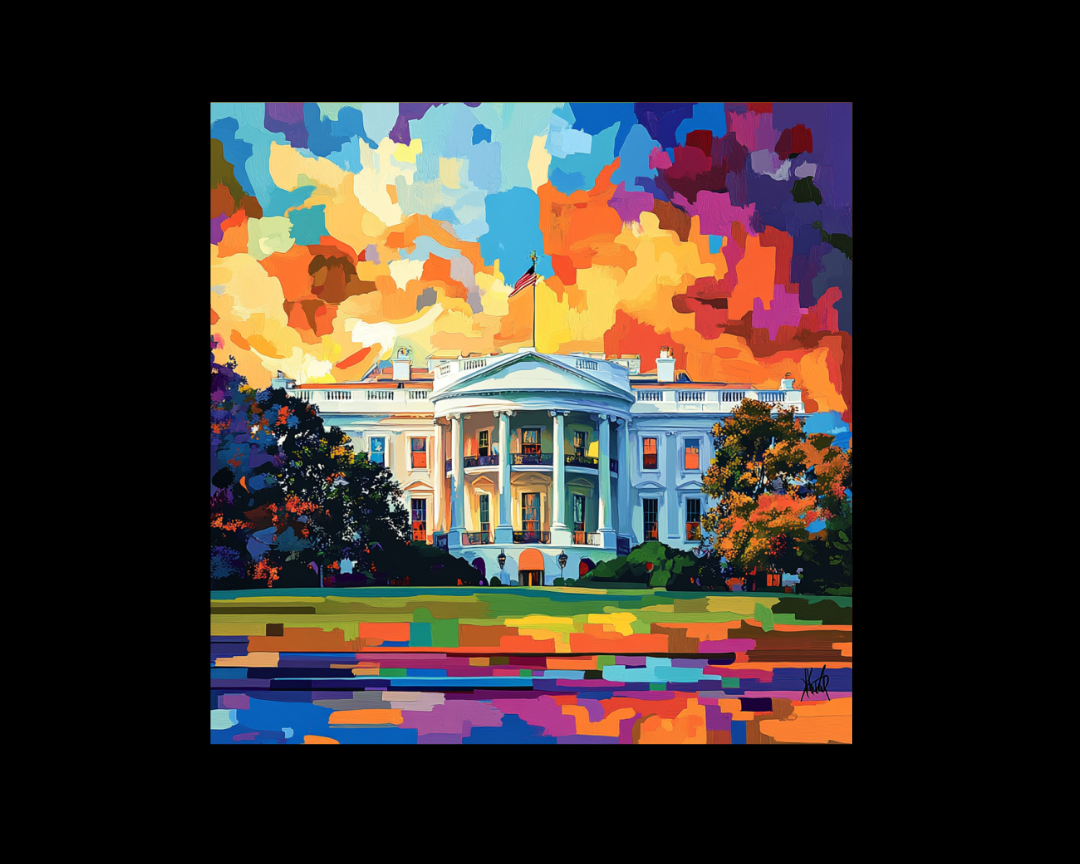5 min read
AI Job Disruption ("Stop Hiring Humans" Campaign)
Remember when we were told AI would only eliminate the most boring, repetitive jobs? That humans would be "freed up" to do more creative,...

In a move that would have seemed like science fiction just five years ago, AI literacy is now official White House policy. President Trump's April 23 executive order doesn't just suggest or recommend AI education—it mandates it, starting from kindergarten and continuing through the American workforce.
The sweeping directive reads like an AI advocate's wish list: a dedicated White House task force, national student competitions, public-private partnerships, and prioritized grant funding—all with 90-120 day implementation timelines that suggest this isn't just another forgotten policy document destined to collect digital dust.
But executive orders are one thing. Real-world impact is another. Will this actually move the needle on America's AI literacy? Or is this just political theater in an increasingly AI-obsessed world?
The order, formally titled "Advancing Artificial Intelligence Education for American Youth," establishes a comprehensive federal framework for AI education that goes far beyond vague platitudes about "the importance of technology."
At its core, the initiative creates a White House Task Force on Artificial Intelligence Education led by the Director of the Office of Science and Technology Policy and including cabinet secretaries from Education, Labor, Energy, and Agriculture, along with the National Science Foundation Director and the Special Advisor for AI & Crypto.
This task force will coordinate several major initiatives:
According to recent research from the Brookings Institution, only about 3% of K-12 schools currently have any form of AI curriculum. This executive order aims to dramatically increase that number through federal coordination and funding prioritization.
The timing of this initiative isn't accidental. It comes as China continues to implement its own national AI education strategy that began in 2018, and as the European Union advances its AI Act with provisions for educational preparation.
The executive order positions AI literacy as both an economic and national security imperative, stating that early AI education will help "nurture the next generation of American AI innovators to propel our Nation to new heights of scientific and economic achievement."
This framing of AI education as critical infrastructure rather than an educational nice-to-have represents a significant shift in how governments view technological literacy.
As we've explored in our coverage of generative AI's impact on SEO, digital literacy is rapidly moving from optional to mandatory, with AI competency becoming as fundamental as reading comprehension or basic mathematics.
Reaction to the order has been cautiously positive among AI education experts. Paul Roetzer, founder and CEO of Marketing AI Institute, expressed surprise at the initiative's comprehensiveness while noting its unexpectedness.
"This is the first time I've heard this administration say anything on this topic, so it kind of came out of nowhere in my opinion," Roetzer noted. "I don't know who's actually the driver of this, though I think it's a very smart initiative."
The language of the order itself has drawn attention for its nuanced understanding of AI's educational implications. It explicitly acknowledges both the need to teach students about AI and to prepare them to use AI effectively—a crucial distinction often missing from technology education policies.
"This can't be handled the way enterprise adoption has been, which is to say 'Here are a thousand Copilot licenses, go figure it out,'" Roetzer emphasized. "If we are going to give the technology starting in kindergarten all the way up, we actually have to teach the students and teachers how to use the technology."
This sentiment echoes what education technology researchers have been advocating for years—that effective technology education requires both infrastructure and pedagogical support, not just access to tools.
While the executive order lays out an ambitious vision, translating it into classroom reality faces several significant hurdles:
America has approximately 3.2 million K-12 teachers, and according to a 2023 EdWeek Research Center survey, fewer than 15% report having received any training on AI. The executive order acknowledges this gap by prioritizing teacher training, but rapidly upskilling millions of educators remains a monumental task.
AI is a rapidly evolving field with significant interdisciplinary components. Creating age-appropriate, accurate, and engaging curriculum materials requires collaboration between AI experts, educators, and instructional designers—a process that typically takes years, not months.
As we've discussed in our analysis of AI search market share, access to cutting-edge AI tools remains highly uneven across geographic and socioeconomic lines. Without specific provisions to address digital divides, a national AI literacy push could inadvertently widen existing educational gaps.
Executive orders can be rescinded by future administrations. The long-term success of this initiative will depend on either bipartisan support or its ability to quickly embed AI education deeply enough in the educational system to survive potential policy shifts.
Looking ahead, the executive order could lead to several different outcomes:
In the most optimistic case, the initiative fundamentally reshapes American education. Federal agencies successfully forge productive partnerships with tech giants and educational institutions. Within five years, AI literacy becomes as fundamental as computer literacy, with a generation of students growing up not just as AI users but as AI creators and critics.
More realistically, the order accelerates existing trends rather than creating entirely new ones. Early adopter schools and districts that were already moving toward AI education receive additional resources and support. Teacher training programs begin incorporating AI components, but implementation remains uneven across regions and districts.
In a more pessimistic view, the initiative becomes primarily symbolic. Initial momentum fades as implementation challenges mount. The Presidential AI Challenge becomes an annual event highlighting talented students, but broader curricular changes remain limited to well-resourced schools already at the forefront of technological education.
The most likely outcome combines elements of all three scenarios, with progress varying significantly by region, school district resources, and local educational priorities.
The executive order creates new imperatives for various stakeholders:
The executive order represents an important first step in recognizing AI literacy as essential infrastructure for America's future. However, the real test will be in implementation details, funding priorities, and sustained focus beyond initial announcements.
"Anything that involves more government interest, action, and funding around AI literacy, I am absolutely for," Roetzer summarized.
The initiative's success will ultimately be measured not by the number of task forces or partnerships created, but by whether the average American student gains meaningful understanding of AI concepts and capabilities. That outcome depends not just on federal directives, but on the coordinated efforts of educators, technology companies, parents, and communities.
At Hire a Writer, we're closely tracking these developments as they shape the next generation of digital communicators. Our team of SEO and content specialists understands how AI literacy impacts everything from search engine visibility to audience engagement.

5 min read
Remember when we were told AI would only eliminate the most boring, repetitive jobs? That humans would be "freed up" to do more creative,...

5 min read
Imagine having a conversation with someone who agrees with literally everything you say. Every idea, no matter how half-baked. Every opinion, no...
.png)
The rapid advancements in technology have ushered in an era where Artificial Intelligence (AI) is reshaping industries and revolutionizing business...